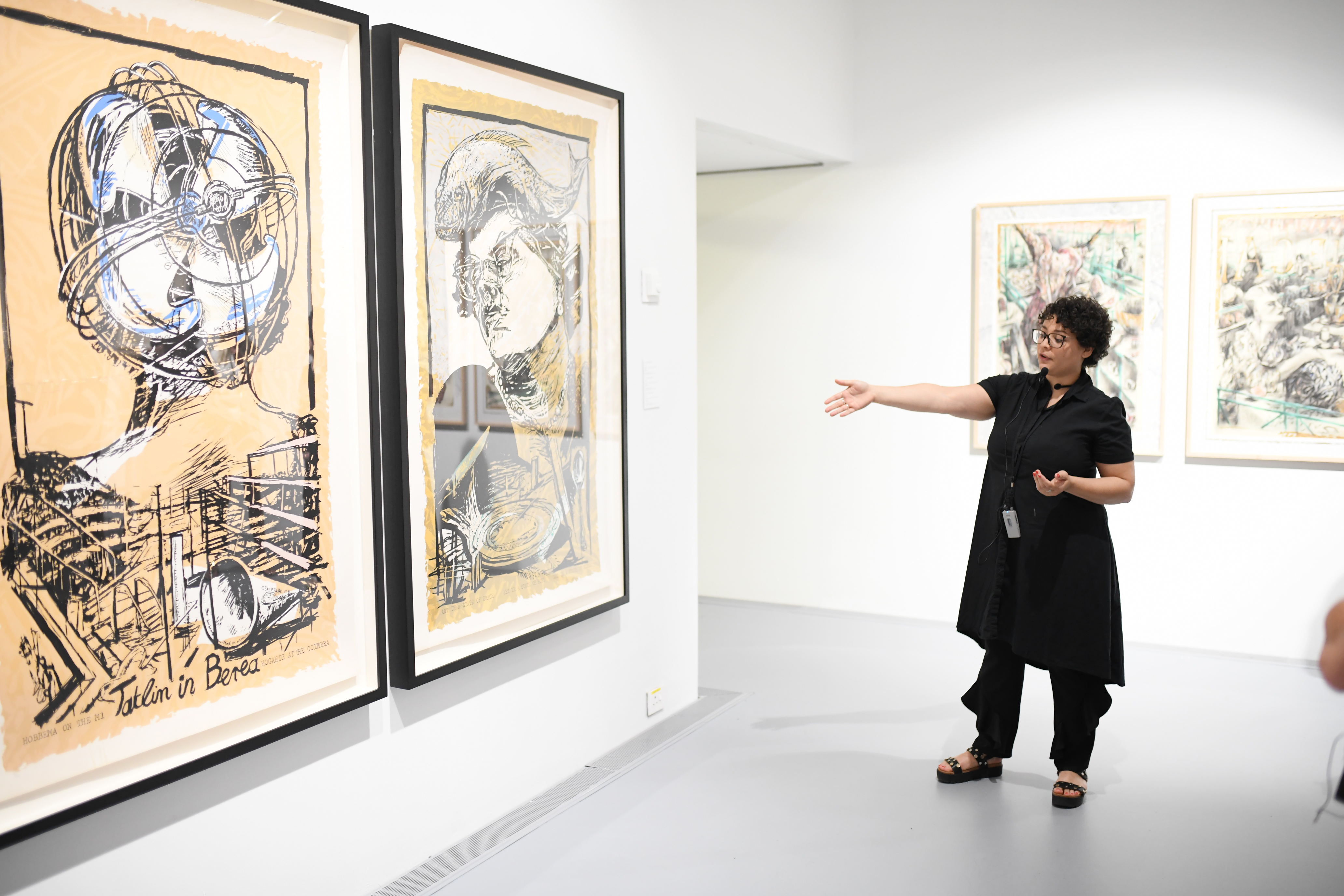AC Unpacked participants have lunch at Veld and Sea in Cape Point(Supplied)
In conversation, the PR agent had called it a trip showcasing Cape Town as a design destination. I see now that she had performed a fine act of tailoring. Had she played it straight, and told me that I was to glimpse a Marriot Bonvoy Moment (an experiential travel package for Marriot Bonvoy members, attainable through a point-redeeming auction system with 29 participating hotels), I probably would have remained with the rats of Brixton.
But here I was, in a hot jersey and jeans after the brief had advised to “keep it light”. Cape Town was having its first post-winter moments of sustained sunlight and I was riding shotgun in the second-to-last vehicle of an impressive, probably seven-member Mercedes Vito convoy.
I say “impressive” because the convoy (of mostly black vans) drew eyes as it headed south from the country’s only Marriot AC Hotel (Cape Town Waterfront) snaking along the peninsula, with stops along the way to take in parts of Hout Bay and Kommetjie. The first stop came about 30 minutes into the drive. Vegan ice cream was served from a pop-up stand on a verge overlooking Hout Bay, where a pair of binoculars was passed around, facilitating views of dassies shuffling about on the rocks 150m or so metres below.
The drive grew ever more languid in the flaming sun. We stopped briefly in Kommetjie, gazing at its off-the-grid, sloping mansions and seaside horse riding routes. The drivers, looking like professional bodyguards in black suits and white shirts, discussed the fauna (specifically snakes) in what looked like a rich, hippie haven. One pondered how much it would take to bring a girlfriend on a sunset horse riding date, while reading the phone number off the corrugated iron roof of the stables downhill.
After a convivial breather in the sun, they returned to their wheels, steering the fleet along the edge of Simonstown, with its three navy ships, before veering further inland towards Veld and Sea where we spent much of the afternoon.
We passed a couple of ramshackle households and more than one yard with a car that can no longer be pushstarted. Farm labourers, perhaps. A kid, a little apart from his group of friends, picked up his crutch as if it were an assault rifle and aimed it at the convoy. There was no way to count how many imaginary rounds he had let off, but probably enough to wipe us all out in the style of a Cold War action movie.
That moment; a fleeting, surreal stand-in for the almost customary politically correct wave, pierced my afternoon idyll.
At Veld and Sea, based at the Good Hope Nursery Gardens, we were surrounded by fynbos gardens and hilly terrain.
The venue offers foraging workshops and dining that double as educational, multisensory experiences. Our hosts, among them Roushanna Gray and her mother-in-law Gael Gray, offered welcoming drinks; beverages with botanical toppings that set the tone for an afternoon of epicurean indulgence, all centred around the richness of fynbos and the relatively unspoiled terrain surrounding the nursery.
A significant part of the afternoon was spent with Jean-Baptiste Cristini of Geometric Gin who distills his own gin and tonics using locally sourced botanicals.
He was generous with his products, going into great detail about his source materials. His presentation dovetailed with the Grays’ shorter tour of the nursery.
The structure and detail of the afternoon was the apex of the experience. On the drive back to the Waterfront, seating arrangements changed shape, and the conversations became more earnest, slightly unhinged even. Cristini’s magic had started to take hold …
There was a panel discussion later on in an events room at the hotel. Panelists Mark Noble (developer of the V&A Waterfront) and Kelly Berman (head of communications for the Southern Guild gallery, based at the Waterfront) spoke with food artist and photographer Caro Jesse de Waal who was the moderator.
Although the panelists were each experts in their respective fields, the panel initially lacked the drive of robust discussion. But perhaps that was its strength; a navel gaze tailor-made for an outside visitor not too concerned about the relative exclusivity of the Silo district in relation to greater Cape Town.
The discussion changed tenor though, thanks to a spontaneous question from the audience, pointing to the very issue of inclusivity.
It seemed to open up a can of worms, but by then I was in a bind of double consciousness, attempting to figure out what all this would mean to me were I an overseas visitor concerned only with an artisinal, chaperoned experience as opposed to a panoramic sociopolitical one.
Day two was largely eaten up by visits to the Southern Guild and Zeitz MOCAA, where the works of Stanislaw Trzebinski and William Kentridge were on display at the respective venues.
 Zeitz MOCAA, where the work of William Kentridge was on display. (Supplied)
Zeitz MOCAA, where the work of William Kentridge was on display. (Supplied)
Trzebinski spoke lucidly about the process leading up to his work and it’s personal meaning to him. At Zeitz, the contrasting styles of museum guides Siseko Maweyi (dramatic, performative and concerned more with form and practice) and Tammy Langtry (direct, historical, concerned more with political context), lifted the experience of encountering Kentridge’s work in the bubble of the Silo district.
They performed the heavy lifting of drawing patrons into the works from multiple angles while also pulling them into a wider understanding of post-World War I industry in Southern Africa.
As a fellow sojourner noted, this Marriot Bonvoy Moment, aimed at the upper echelons of society was among the better PR jaunts.
But in my final analysis, it is still a cocooned, blinkered experience of South Africa that could do without the overreliance on the Silo district.